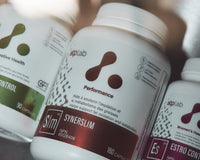Can Light Make You Fat?

In the world of health and wellness, the conversation about body composition is usually kept to diet, exercise, and possibly sleep, but what about light? This is a new area of emerging research and one that is sure to open many of us to a new world of health optimization. Let us first examine how light can affect us as humans, which is an infinitely complex topic, so for this article we will focus on circadian rhythm.
The circadian rhythm is the natural process of sleep/wake cycles that humans follow as dictated by the rising and falling of the sun. The key point is that during the “light” period, our bodies are meant to be awake and the biological function we experience reflects that: hormone release, organ function, increases in energy, etc. The “dark” period is once the sun has set and this signal is one that prepares the body for a different state, one of; sleep, rest, and recovery. The short of it is when the sun is up, we should feel energetic and productive when the sun goes down, we should be resting. To learn more about the details and why they matter, let’s dive into some details. Hint, the eye plays an essential role in all of this.
Our body uses our eye for two specific functions. The one everyone knows is to be a camera and see the world around us, the other lesser known function is to be a clock. This “clock” is housed in our brain and connects to specialize cells in the eye which responds to light signals that determine when our bodies should send a wakeful signal or one of sleep. It is this function that can get us into trouble. The light we experience from the sun is full-spectrum, meaning it contains all the colours: infrared-red-orange-yellow-green-blue-violet-ultraviolet. This natural “packet” of light is balanced and depending on where the sun is in the sky (at noon it is at its most powerful) our body will respond accordingly. For example, the morning sun has higher amounts of red, green, and blue light which help promote wakefulness, green and blue specifically can raise cortisol and get our body ready for the day. Mid-day sun has UV which is why in certain climates we can only make vitamin D at certain times of day. It is this recognition of light that can be so beneficial or harmful to us, and it’s all about timing.

References http://www.washingtonpost.com/wp-dyn/content/article/2010/06/28/AR2010062803820.html http://www.hhmi.org/biointeractive/human-suprachiasmatic-nucleus https://en.wikipedia.org/wiki/Sunlight http://www.bioopticsworld.com/articles/2012/10/blue-light-exposure-boosts-stress-hormone-response-in-sleep-deprived-teens.html

(This image helps represent the above description)
So how can light make us fat? Let us examine what most people do when they get home for the day and the sun has gone down. Humans have the ability to control their environment artificially. We can illuminate and heat our house at any time of day. This is a wonderful thing overall but can come with some inherent risk that many are unaware of. Energy-efficient light, TV screens, computer, and especially cell phones all contain high amounts of blue light. The reason for this is that blue is very powerful and bright, but does not have the power-draining heat you get from a normal light-bulb. The issue here is that when your eye sees blue light in the evening it is mismatched with the time of day and as a result it sends a wakeful “stress” response because your brain thinks it’s a different hour than what the clock says. This in turn raises cortisol, destroys melatonin production and as a result we experience: increased blood sugar levels, lack of optimal sleep, and poor brain detoxification. Melatonin acts an a VERY powerful antioxidant which has been correlated with health-span. Over time this can result in compromised health across the board especially for those looking to maximize body composition! What is the solution then? There are a couple ways you can approach an intervention, depending on how extreme you want to get. I personally have specific lights I use in the evening, I put blue-blocking apps on my technology (this has a marginal-to-moderate effect), I have special eye-wear for evening use, and I avoid electronics as best I can. That last one will be hard for most. All of these things add up to help regulate my circadian rhythm and optimize sleep, recover, and energy levels. My favorite items for each category:- On phones: night-mode, nightshift, twilight,
- On computers: f.lux, and red screen
- Light bulbs: GE Align
- Eyewear: carbon shade, bluetech
References http://www.washingtonpost.com/wp-dyn/content/article/2010/06/28/AR2010062803820.html http://www.hhmi.org/biointeractive/human-suprachiasmatic-nucleus https://en.wikipedia.org/wiki/Sunlight http://www.bioopticsworld.com/articles/2012/10/blue-light-exposure-boosts-stress-hormone-response-in-sleep-deprived-teens.html





